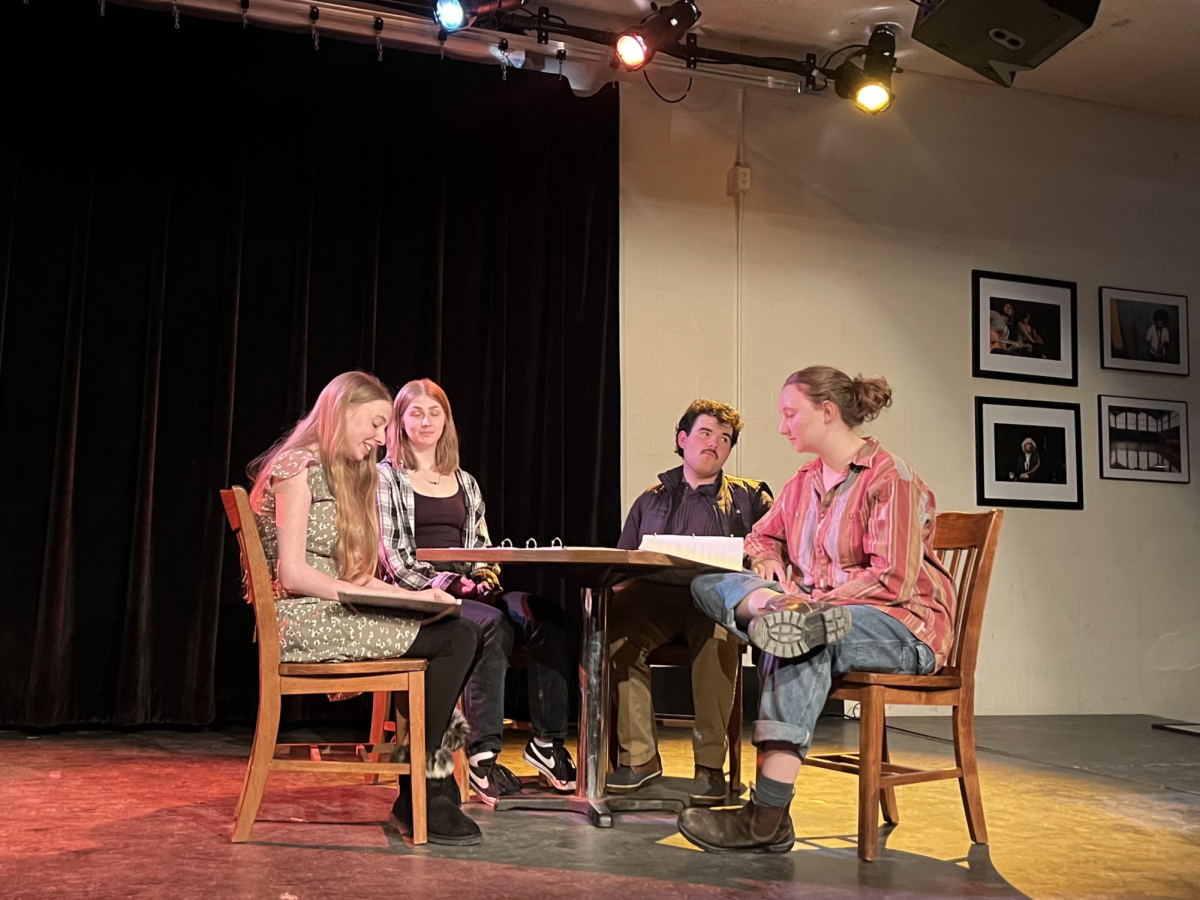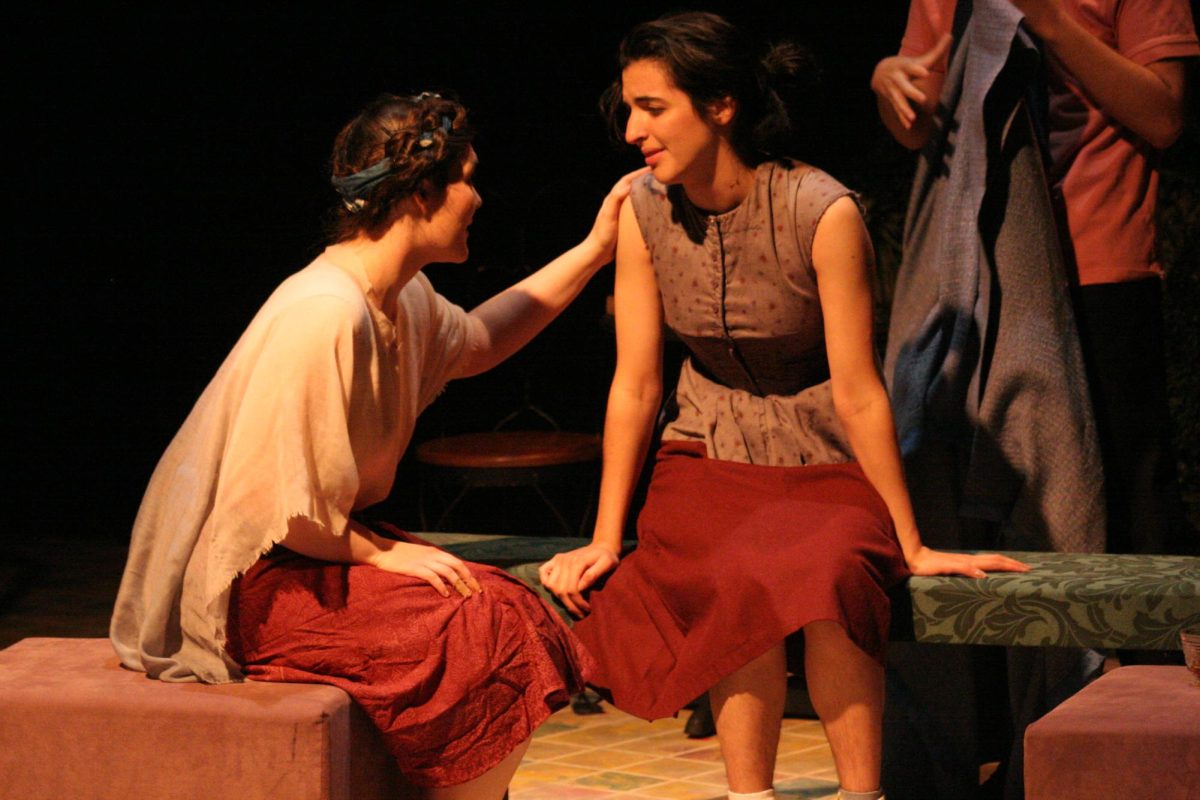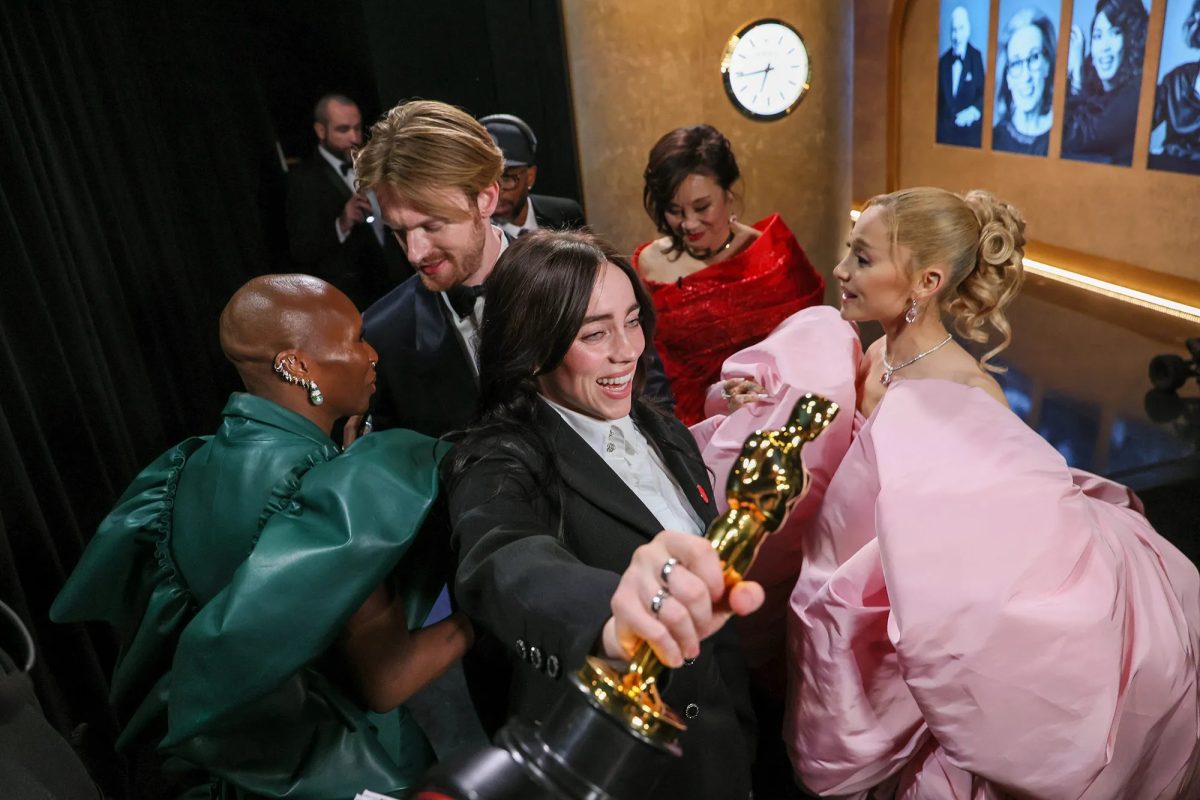With no preparation but a vague plot synopsis and a green poster visual boasting the words “FROG GOES HERE,” I took a seat at the Cat in the Cream on Feb. 18 for the singular, ticket-free showing of Tokusatsu, written and directed by College second-year Carrie Shevitz. On the humble stage stood a table, four chairs, and a framed poster of Monseru, Tokusatsu’s fictional analogy to the Godzilla franchise featuring a giant frog in the place of the famous reptilian monster. The audience’s applause welcomed Shevitz as she walked to center stage to announce her debut as a director, a culmination of her past one and a half years of work.
Ian Holms, played by College fourth-year Seamus Higgins, opened the show as he cautiously took a seat across a panel of three executives. While he gave his pitch to direct the first Monseru movie of the series, I found myself holding my breath. Holms’ monologue was uncomfortable, nervous, and awkward. It seemed to last too long, with a striking lack of response from the executives of Monseru, who did not speak so much as a single word or give so much as a single nod.
“[Higgins] knew how to make it sound like he was just completely unsure of himself,” Shevitz said. “There’s a reason that Holms speaks for so long without anyone else. I wanted to set the mood and the atmosphere of being unable to communicate that inhabits the overwhelming majority of the play.”
The executives broke their extended silence with an offer to Holms to direct the second Monseru movie instead of the first. With hesitation and an ache of disappointment, Holms accepted, exemplifying the survival instincts in the world of film. His hopelessness and obligation to settle for whatever job he could secure was not only pitiful but highly realistic in the context of filmmaking. From this, I knew that Tokusatsu was not a shiny utopia but a bittersweet slice of life.
Holms’ toxic friendship with Sadie Klingman, the writer and assistant director of Monseru, played by College second-year Valerie Clelland, was introduced in the second act. Their heated argument about a plot detail of Monseru completely shifted the tone from the first act, now displaying the aspect of conflicting perspectives in film, rather than individual losses.
Having only had two weeks to prepare for their roles, the actors read from physical scripts. Fortunately, the fragile relationship between Holms and Klingman was clearly developed, as the two made up for this obstacle with convincing expressions of annoyance and a constant back-and-forth of bickering and attacks.
One of the executives, Harry Nashton, played by College second-year Ev Ackert, promised Klingman that he would help her use Monseru as a stepping stone to her main goal — working with a studio called PFT. Both Holms and Klingman were propelled by a desperation for the project to be a success in order to be a step closer to their respective dreams, and thus continuously butted heads throughout their interactions.
“I wanted to tell a story about the destruction of dreams,” Shevitz said. “That was always the big idea with the two main characters. What drives Ian throughout the entire play is this loss of what he wanted most. At the same time, that’s also what’s driving Sadie — this feeling of hopelessness that they won’t be able to make what they’ve always wanted to.”
With the introduction of an egotistical Jack Fulmer, played by College first-year Zoë Brush, Holms and Klingman’s friendship began to shift for the first time. Fulmer, working for PFT and dating Klingman, served a role of comedic relief that was almost annoying, as his character simultaneously raised laughter and eyebrows. When Holms asked Klingman why they were together, they set aside their coworker disagreements and bonded over talk of past and current relationships, as well as the issue of ego in filmmakers.
“I wrote the character of Jack to poke fun at the idea of the young auteur director,” Shevitz said. “He thinks he’s the only person working on his film and the only vision driving it. He doesn’t factor in the influences around him — the directors that have come before him that he loves and have inspired him, the people working on it now, and the people in his life who may be influencing his choices, like Sadie. You can’t make art alone, really.”
Although the state of Holms and Klingman’s friendship oscillated between extremes, their moments of connection proved to be worthwhile. When Holms asked Klingman what she really wanted, she revealed her vision for a future project. The highlight of Tokusatsu was being able to see the two characters progress in their friendship, career, and love for the art of film. The final scene was unexpected yet satisfying: Klingman declared that Holms needed to see his vision for the first Monseru movie through, offering to write the script together. As Holms threw the framed poster of Monseru on the floor, the glass shattered, as did their frustrations.
“I projected a lot of myself into Ian and Sadie,” Shevitz said. “I share his anxiety that no one is going to come to see his art or get what it has to say, and it’s just going to remain misunderstood. That was definitely not validated last night. It means a lot that this art went fully realized. I wanted to tell a story about the destruction of dreams, but then how they’re rebuilt with collaboration and the process of making art. It was a very gratifying night, despite how exhausted I was, to hear everyone applauding for the actors and what they just saw.”










